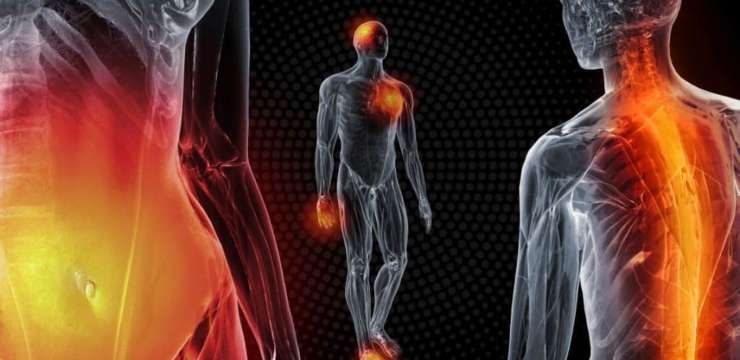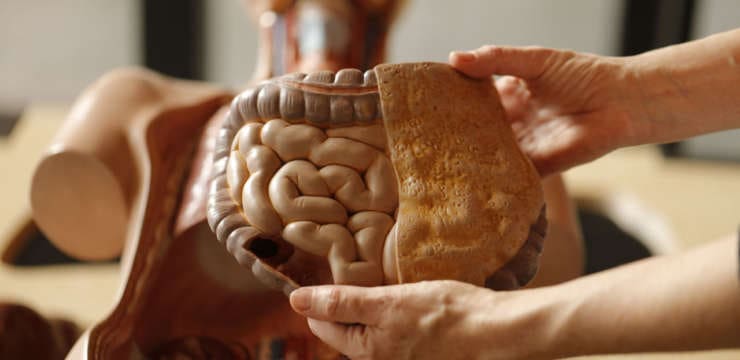A satisfying salad is a great way to get more fruits and vegetables high in vitamins, minerals, and fiber. A salad using the right ingredients…


A satisfying salad is a great way to get more fruits and vegetables high in vitamins, minerals, and fiber. A salad using the right ingredients…

Introduction The immune system is crucial in protecting the body from foreign pathogens that cause inflammation in the affected area. Cytokines produce inflammation in the body to…

Introduction Around the world, many individuals will have some reaction to the foods they consume. This type of reaction can lead to a series of…

Nutrition and Chiropractic Care: Chiropractic care treats the body as a whole. It can relieve and alleviate ailments from injuries, conditions, or diseases to help…

Introduction Nowadays, many individuals are incorporating various fruits, vegetables, lean portions of meat, and healthy fats and oils into their diet to get all the vitamins…

Introduction As more and more people start to keep track of their health, many often try to figure out what foods contain the right amount…

Bone Broth Benefits: Bone broth is made by simmering the bones and connective tissue from just about any animal, including chicken, turkey, beef, pork, fish,…

The holidays are a wonderful time to gather with family and friends and celebrate. However, it can be a time of overindulgence and overeating. Managing…

Back pain after eating is often the result of conditions and/or disorders in other areas of the body that radiate to the back. These problems…

The body needs food for fuel, energy, growth, and repair. The digestive process breaks down food into a form the body can absorb and use…

Viscerosomatic Gut Bloating: Everybody has healthy bacteria in the gut, but it can get thrown off balance with unhealthy bacteria that start taking over. Stress,…

Maintaining a healthy weight is challenging, especially Fridays, Saturdays, Sundays, and extended weekends, increasing the risk of binge eating and weight gain. This is where…

Introduction Finding the right set of nutritional supplements and foods is hard when trying to go for a healthier lifestyle. For individuals that are trying…

Introduction When the body sustains injuries, it goes through a process called inflammation. Studies show that when the body starts activating the immune system and…

Introduction In today’s podcast, Dr. Alex Jimenez and Master Nutritionist Ana Paola Rodriguez Arciniega discuss what kinds of foods can dampen the effects of fibromyalgia…

Introduction In today’s podcast, Dr. Alex Jimenez, Health Coach Kenna Vaughn, and Sports Dietitian Lizette Ortiz discuss how food substitutions can help a person feel…

Detox
Detoxification is part of the body’s response to environmental stressors. In order for the body to properly detox, protein is essential. Physiologically speaking, detoxification is a secondary function in terms of protein allocation. In a proper detox, there are multiple phases/steps.Â
Step 1: mobilization from fat-based storage sitesÂ
Step 2: metabolism (phase 1 and 2 enzymes in the liver)Â
Step 3: elimination via kidneys and GI Tract (phase 3)Â
Lifestyle
The first lifestyle change that occurs along with a detox is to reduce environmental stressors. This ensures the body is not working overtime when it does not need to. Ways to reduce environmental stressors include:Â
Reduce toxic exposureÂ
Reduced processed foods
Reduce proinflammatory foods
Reduce caloric intakeÂ
Reduce excess worry and stressÂ
Next, patients will begin to introduce habits into their daily lifestyle. These introductions are critical for detoxification success.Â
Quality, whole foodsÂ
Meditation, yoga, exercise, music, etc.Â
SleepÂ
Other healthy habits that reduce stress and worryÂ
Detoxification has both a physiological goal as well as a biochemical goal. Biochemically speaking, the goal is to mobilize toxins we have stored in fatty storage deposits (heavy metals, etc.) and eliminate them via the bile (from the liver) through the stool or urine (from the kidneys). Additionally, a detox will help to reduce inflammation and improve mental clarity.Â
It is important to note that the nervous, endocrine, and immune system are all vastly connected and the stimulation of one can commonly trigger responses in all.Â
By decreasing the inflammation and toxic load in the body, individuals’ phase angle may benefit. Phase angle is how health care professionals can monitor the integrity of cellular membranes. If the phase angle begins to decline, it has been linked directly to a decline in overall health. Similar to if phase angle increases, overall health is increasing. The integrity of cellular membranes is essential as cell survival depends on solid membranes. When the cellular wall is weak, it can collapse. From here, it is difficult for the body to take up the proper nutrients it needs. Additionally, with a weak cellular membrane, the cell is left with little to no protection from outside invaders.Â
InBody
We monitor a patient’s phase angle with the use of the InBody 770. This advanced machine allows us to not only track the phase angle of our patients but many other areas of their health as well, including but not limited to intracellular and extracellular water.Â
[embedyt] www.youtube.com/watch?v=WwbIsPNUYqs%5B/embedyt%5D
PHASE ANGLE IS ONE OF THE BEST WAYS TO GET AN INSIDE PERSPECTIVE OF WHAT IS ACTUALLY HAPPENING INSIDE THE PATIENT’S BODY. THERE ARE MANY PATIENTS WHO APPEAR HEALTHY BUT HAVE A LOW PHASE ANGLE. BY SEEING THIS, WE ARE ABLE TO MAKE PREVENTATIVE LIFESTYLE CHANGES. -KENNA VAUGHN, ACSM-EP, SENIOR HEALTH COACH
References:Â
Bosy-Westphal A, Danielzik S, Dörhöfer RP, Later W, Wiese S, Müller MJ. Phase angle from bioelectrical impedance analysis: population reference values by age, sex, and body mass index. JPEN J Parenter Enteral Nutr. 2006 Jul-Aug;30(4):309-16. doi: 10.1177/0148607106030004309. PMID: 16804128. Â
Klein AV, Kiat H. Detox diets for toxin elimination and weight management: a critical review of the evidence. J Hum Nutr Diet. 2015 Dec;28(6):675-86. doi: 10.1111/jhn.12286. Epub 2014 Dec 18. PMID: 25522674.Â
Additional Online Links & Resources (Available 24/7)


Â
Online Appointments or Consultations:  https://bit.ly/Book-Online-Appointment


Â
Online Physical Injury / Accident Intake Form: bit.ly/Fill-Out-Your-Online-History


Â
Online Functional Medicine Assessment: bit.ly/functionmed
Â
Disclaimer
Â
The information herein is not intended to replace a one-on-one relationship with a qualified health care professional, licensed physician, and is not medical advice. We encourage you to make your own health care decisions based on your research and partnership with a qualified health care professional. Our information scope is limited to chiropractic, musculoskeletal, physical medicines, wellness, sensitive health issues, functional medicine articles, topics, and discussions. We provide and present clinical collaboration with specialists from a wide array of disciplines. Each specialist is governed by their professional scope of practice and their jurisdiction of licensure. We use functional health & wellness protocols to treat and support care for the musculoskeletal system’s injuries or disorders. Our videos, posts, topics, subjects, and insights cover clinical matters, issues, and topics that relate and support, directly or indirectly, our clinical scope of practice.* Our office has made a reasonable attempt to provide supportive citations and has identified the relevant research study or studies supporting our posts. We provide copies of supporting research studies available to regulatory boards and the public upon request. We understand that we cover matters that require an additional explanation of how it may assist in a particular care plan or treatment protocol; therefore, to further discuss the subject matter above, please feel free to ask Dr. Alex Jimenez or contact us at 915-850-0900.  Read More…
Dr. Alex Jimenez DC, MSACP, CCST, IFMCP*, CIFM*, CTG*
email: coach@elpasofunctionalmedicine.com
phone: 915-850-0900
Licensed in Texas & New Mexico